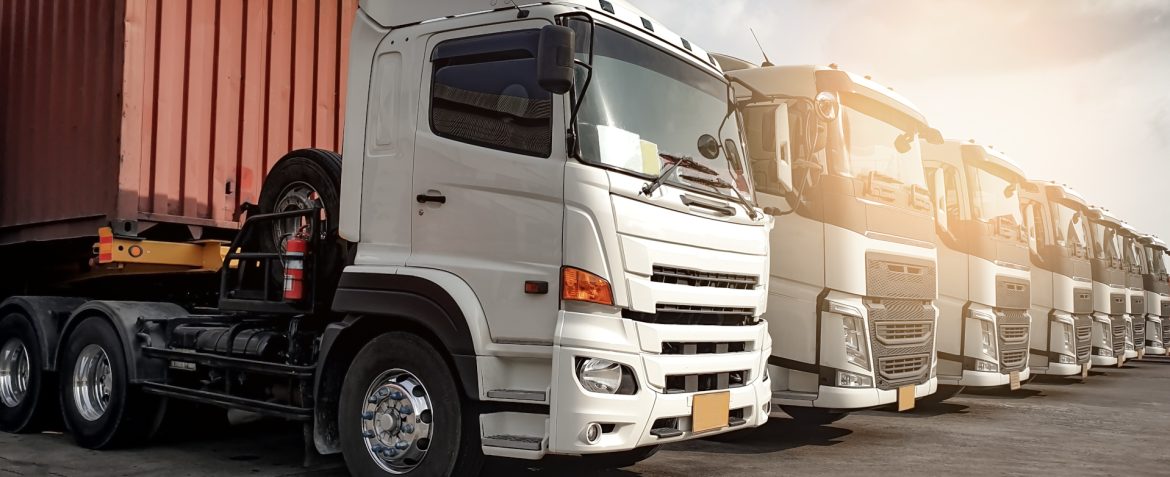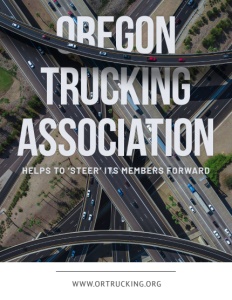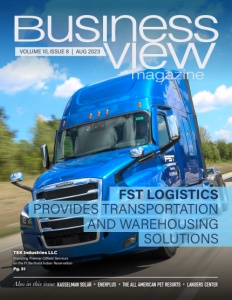Oregon Trucking Association
Oregon Trucking Association helps to ‘steer’ its members forward
Driving the advocacy and educational agenda, Oregon Trucking Association provides the roadmap for the Oregon trucking industry
In a state known for its outdoor splendor and scenic highways, the trucking industry remains a major player in keeping things rolling along the state’s beautiful routes while helping to fuel the state’s economic engine.
Providing a voice for the vital trucking sector, the Oregon Trucking Association helps to drive the sector’s educational and legislative agenda forward for all its valued members and keep on top of the issues that most affect the Oregon-based trucking industry.
Headquartered in Oak Grove, the Oregon Trucking Association (OTA) has been in existence for more than 80 years. We recently spoke with Jana Jarvis, its president and chief executive officer. She told us more about all the Oregon Trucking Association does for its members and the myriad impacts upon modern trucking.
Jarvis says her group had its origins as the Oregon Motor Transport Association in 1939. Six years prior, the American Trucking Association formed, and of course, the OTA’s Evergreen State corresponding group, the Washington Trucking Association, formed back in the 1920s. There was then a great deal of discussion, vis-à-vis the regulation of trucking.
“The interest was to come together as a coalition, primarily from a perspective of advocacy,” Jarvis informs. “Because we were a regulated industry until the 1980s, there was some value in members coming together and having that perspective. We’ve grown as an organization, in terms of what we do and what we offer.”
In 1954, the group changed its name to the Oregon Trucking Associations—plural—as it was a combination of like groups and interests. Just this past year, the OTA’s board voted to drop the “S,” so that it might go forward as a single entity working in favor of Oregon’s trucking interests, says Jarvis.
“We’ve had a bit of an evolution over the years,” she adds, citing the OTA’s advocacy for a variety of trucking interests, from logging trucks to parcel delivery, “and just about everything else in between. We have a lot of private carriers.”
The latter group spans everything from small businesses, such as bakeries with their fleets, for example, all the way to over-the-road for-hire trucking company interests. OTR trucks carry freight over interstate highways at the regional level, and they place bids on contracts for hauling the freight. Plus, a number of the OTA’s members transport freight all across the United States, as Jarvis informs.
A variety of approaches
Jarvis continues that her organization offers a variety of approaches to help truckers, not the least of which is training.
“We have a very large training program,” she says. “I have a gentleman who spearheads that effort.”
That would be Adam Williamson. According to the OTA, in his current role, Williamson provides safety training and consulting services on behalf of the OTA to association and industry members.
Jarvis adds that many state and federal regulations govern how the Oregon Trucking Association conducts its advocacy, training, education, and other efforts. Sharing its expertise, and being able to help fellow truckers, is what the OTA is all about.
“We offer a lot of services there to keep our members educated and informed,” she adds, “so they can do business the best way possible.”
There are also networking events, which are likewise geared to be educational opportunities. The OTA’s annual convention is an example of this. A longtime participant is the Oregon Department of Transportation. At these events, attendees can meet key players and leaders in the trucking industry. It’s just a way, says Jarvis, whereby members may better themselves.
Then there are workers’ compensation and the industry’s strictly enforced drug-testing requirements. OTA members get discounted rates for such things.
Banding together to advocate for each other and their fellow truckers at the local, state, and federal levels is of paramount importance, says Jarvis. Thus an organization such as the OTA just makes good business sense. Tax issues, environmental issues, labor issues, infrastructural issues, and issues with the Department of Transportation all fall under the purview of the OTA.
 Infrastructure
Infrastructure
Jarvis notes that good trucking relies upon good roads. Portland, Oregon’s largest city, with a population greater than 600,000, has long been infamous for its bad roads. Only a few years ago, Portland was ranked ninth in the nation amongst America’s worst roads.
Jarvis cites problems with Interstate-Five, a major route running north to south, stretching from Canada to Mexico. One section of the I-Five has only two lanes, and this of course leads to major road congestion. However, the OTA, she reveals, successfully lobbied the Oregon State Legislature to do something about these road problems.
Yet correcting problems is not without problems in and of itself, as Jarvis notes, and timetables for making needed projects come to fruition can be stretched out like taffy. The road improvements became a hot-button topic: very politically charged and very expensive, requiring a 53-percent tax increase to make them a reality. Still, to this date, it hasn’t happened, as Jarvis reveals.
“By and large,” she informs, “those projects have yet to be built.”
The OTA isn’t giving up. Jarvis says the organization is doing all it can to improve those roads for truckers and all motorists.
Talking of the I-Five corridor, there’s a historic bridge over the Columbia River. It’s more than 100 years old, and its pilings don’t go down into the bedrock beneath the river.
“It’s an accident waiting to happen,” says Jarvis, and so she and the OTA are lobbying the legislature as hard as they can to do something about this bridge in that assembly’s current session. Jarvis serves on an advisory committee, trying to determine the State of Oregon’s costs for replacing said bridge, which will be shared with Washington.
 Lack of labor
Lack of labor
How has the lack of skilled labor affected the trucking industry? Jarvis says in Oregon, this shortage has created long-term problems.
“The pandemic created all kinds of interesting dilemmas for us,” she says.
“There were several drivers on the cusp of retirement, and the early pandemic conditions were so adverse for drivers that many of them said, ‘It’s time to retire,’ and so the shortage got worse in the short term. We are actively engaged. Oregon has nine workforce boards, and for many years those workforce boards were focused on other industries outside of transportation.”
“I have a member who is my former chairman of the association, who got involved with his workforce board in 2015, and he realized there was an opportunity to connect what the state was trying to accomplish with what our industry was trying to accomplish. As a result of that, we now have eight participants. We are in the process of getting eight trucking participants out of the nine workforce boards. We will work hard to get that ninth one placed sometime here in the coming year, and that allows us to work alongside the State,“ she continues.
There are 55 bills during the current legislative session that are aimed at workforce issues, mostly in areas outside of transportation.
“We don’t work with CDL schools per se,” says Jarvis. “We are more of a finishing school. That’s the best way to describe it. We work with management at the trucking companies: their safety directors, their HR directors, folks who are involved in the industry at those kinds of levels in terms of everything from improving their professionalism, helping them be better speakers at their company meetings or how to manage more effectively their specific skill sets and understanding what all is involved in the job that they’ve been hired to do. We are focused on the company management pool rather than training drivers. But we work alongside the CDL schools.”
Several trucking schools are members of the OTA. Jarvis advocates for them on their behalf at the level of the state legislature.
Why is there a shortage of female drivers in the industry? Being a woman, Jarvis says she speaks for the industry.
“I hope that helps,” she says. “I have five women-owned trucking companies that are members of our association. One is a former chairman of our organization inrecent history. One of them is an Oregon state legislator, so we have women in leadership in this state, focused on transportation and the trucking industry.”
“They’re getting increasing visibility for their roles in doing that, and I think it’s a great start. If you think about trucking as a traditionally male-dominated industry, there are some very practical reasons why that was. If you look at the older trucks, it took a lot of strength to be able to drive a truck. It just did. I can tell you that, because many years ago when I first started my career, I was in the manufacturing industry, and we had a trucking division. I tried to drive one of those in our parking lot, and it took a lot of strength to be able to shift the gears!”
Jarvis further highlights that truckers of all types are more valued nowadays, certainly post-COVID.
“I think that we are much better appreciated as an industry today,” she concludes.
AT A GLANCE
The Oregon Trucking Association
What: The leading association representing the needs and advocating on behalf of its trucking and logistic-based members
Where: Oak Grove, Oregon
Website: www.ortrucking.org


